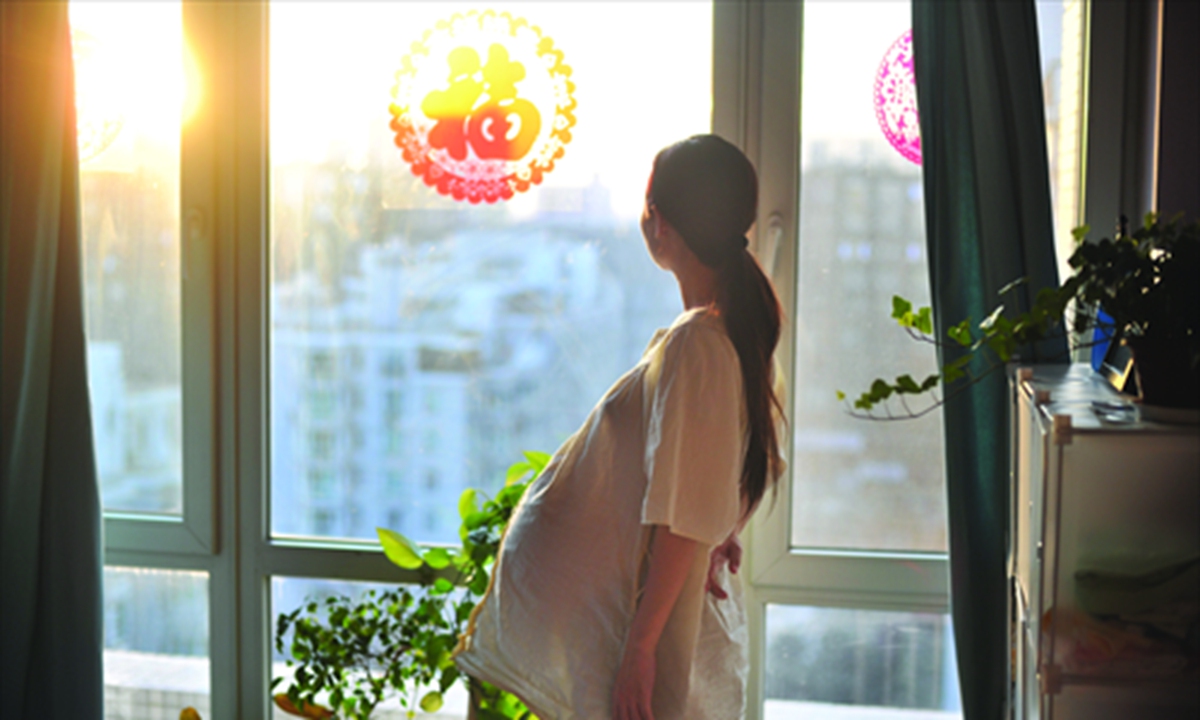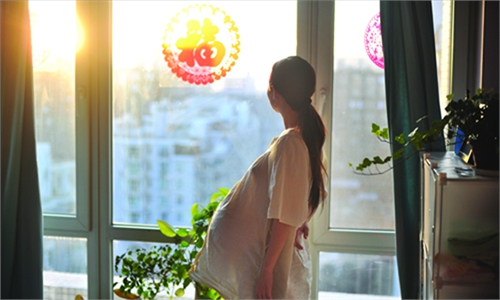
A pregnant woman. Photo: VCG
The ratio of third children among Chinese newborns in 2022 was 15 percent, 0.5 percentage points higher than in 2021, a statistical bulletin released by China's top health authority on Thursday showed. Experts said the increase shows China's third-child policy has had an impact and that the government should keep boosting childbirth-supporting policies.
According to the Statistical Bulletin on Health Development in China 2022 released by the National Health Commission (NHC), the Chinese mainland had 9.56 million newborns in 2022, with the second child of a married couple and three or more children in a family accounting for 38.9 percent and 15 percent respectively.
The 2021 health statistical bulletin showed the number of births in China was 10.62 million in 2021. And the ratios of second-child and third-child among newborns were 41.4 percent and 14.5 percent.
Comparing the statistics in 2021 and 2022, the dropping proportion of second-child newborns indicates that the accumulation effect of second-child births has basically come to an end, while the increased proportion of third children shows that the third-child policy has achieved some results, He Yafu, an independent demographer, told the Global Times on Thursday
He pointed out that the decreasing numbers of first-child, second-child, and multiple-child births reflect that both the number of women of childbearing age and the fertility rate are declining. "The decline in women of childbearing age exposes the structural problems in China's population and will have a significant impact on the population for a long period of time in the future," He said.
He told media that the number of births in 2023 is likely to decrease by around 10 percent compared to 2022, dropping to approximately 8.5 million given factors such as the continued decline in the number of women of childbearing age and in marriage registrations.
At the same time, China is continuing to invest more in expanding the capacity of healthcare resources and improve the healthcare service system.
By the end of 2022, the total number of healthcare institutions nationwide amounted to 1.03 million, an increase of 1,983 from 2021.
The total number of beds in medical and health institutions reached 9.75 million nationwide, 300,000 more beds than 2021. The number of medical and health institution beds per thousand of people increased from 6.7 in 2021 to 6.92 in 2022.
In terms of medical personnel, the total number of doctors and nurses nationwide reached 14.41 million at the end of 2022, an increase of 425,000 from 2021.
The improvements in healthcare services benefited pregnant women and newborn children. According to the 2022 health statistical bulletin, maternal and child health care has been improved. A total of 97.9 percent of pregnant women had prenatal check-ups and 96.5 percent had postpartum check-ups in 2022. Both increases from 2021.
In 2022, the mortality rate of children under 5 was 6.8 per thousand while the infant mortality rate was 4.9 per thousand. The pregnant and maternal mortality rate was 15.7 per 100,000. All down from 2021.



